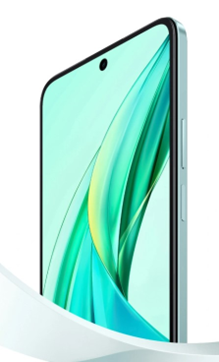Amidst
an era where smartphones seem to shed ports and features with each new
iteration, the humble headphone jack stands as a relic of the past, steadfastly
holding its ground. While many phone manufacturers have opted to remove this
once-ubiquitous port in favor of wireless audio solutions, a significant number
of devices still maintain it. The reasons behind this retention are
multifaceted, intertwining practicality, user preference, and a nod to
inclusivity in the evolving landscape of smartphone technology.
Examining the Reasons Behind the Headphone Jack's
Persistence
Universal Compatibility and Convenience
The
headphone jack, with its 3.5mm diameter, offers a universally recognized
standard for audio connectivity. This means that regardless of brand or model,
users can plug in their favorite pair of headphones, earbuds, or aux cable and
expect them to work seamlessly. In a world where proprietary connectors and
dongles can lead to frustration and added expenses, the headphone jack's
universality presents a compelling argument for its retention. It ensures that
users can easily connect their devices without worrying about compatibility
issues or the need for additional adapters.
Widespread Adoption of Wired Audio Devices
Despite
the rise of wireless earbuds and headphones, a significant portion of the
market still prefers wired audio devices. Audiophiles often argue that wired
connections offer superior sound quality, with less latency and potential for
loss of signal compared to Bluetooth alternatives. This preference for wired
audio, whether due to personal preference, habit, or the desire for
uninterrupted listening experiences, provides a clear incentive for
manufacturers to continue including the headphone jack in their designs.
Cost Considerations for Manufacturers and Consumers
From
a manufacturing standpoint, the removal of the headphone jack can lead to cost
savings. By eliminating the port, companies can potentially allocate resources
towards other components or design innovations. However, this cost-saving
measure may not always translate to savings for consumers. Those who opt for
wireless audio solutions often find themselves purchasing additional
accessories such as Bluetooth earbuds or dongles, adding to the overall cost of
ownership. For budget-conscious consumers, the presence of a headphone jack can
mean avoiding these extra expenses and making use of existing audio
accessories.
Maintaining a Bridge to Legacy Devices
The
decision to retain the headphone jack also serves as a bridge between past and
present technologies. Many users still own a collection of wired headphones,
earbuds, and audio equipment that rely on the trusty 3.5mm connection. By
keeping the headphone jack in place, manufacturers acknowledge the continued
relevance of these legacy devices. This consideration for users with existing
accessories reflects a commitment to inclusivity and a recognition that not all
consumers are ready, or willing, to make the leap to a wireless-only ecosystem.
User Choice and Flexibility
Ultimately,
the presence of the headphone jack boils down to user choice and flexibility.
In a market flooded with options, consumers appreciate having a range of
features to suit their needs and preferences. For some, the convenience of
wireless audio is unmatched, offering tangle-free mobility and modern
convenience. However, for others, the reliability, affordability, and
familiarity of the headphone jack remain essential considerations when choosing
a smartphone. The HONOR X7b 5G comes with a headphone jack and features dual stereo speakers,
immersing you in the world of sound. Whether you're listening to music through
the speakers or with headphones, you can enjoy excellent audio quality.

Conclusion
As
smartphones continue to evolve, the fate of the headphone jack remains a topic
of debate and speculation. While some companies embrace the wireless future
with open arms, others recognize the enduring value of this seemingly simple
port. Its presence goes beyond mere functionality, representing a nod to
tradition, a commitment to accessibility, and a recognition of the diverse
needs of smartphone users worldwide. In an industry marked by rapid change, the
headphone jack stands as a symbol of stability, reminding us that sometimes,
the old ways still have a place in the modern world of technology.
